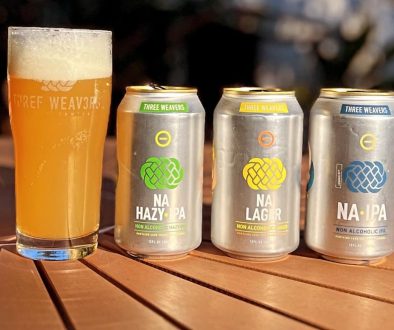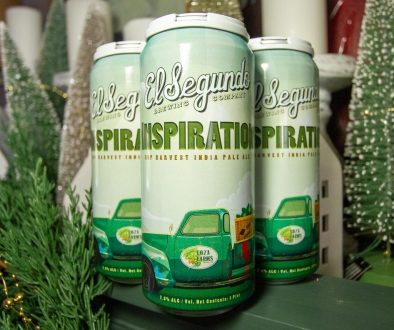Is There a Future for The Independent Craft Brewer?
In 2011, Anheuser-Busch InBev (ABInBev) began a shopping spree that would go on to include the acquisition of one of its biggest competitors (SABMiller) plus eight of some of the fastest-growing microbreweries in the United States—sparking major unrest and a new dialogue about the pressures of “big beer” throughout the craft beer industry. Today, the lure of big beer is as prevalent as ever, with stories of acquisitions featuring some of America’s craft brewery darlings dominating social media and plastered across headlines of newspapers and beer publications far and wide. A divide is growing in the industry, and the platform where the independent craft breweries stand is getting smaller and smaller everyday.

But at the end of the day, breweries turning over the reigns to conglomerates like ABInBev and Constellation Brands are walking away with some serious cash. San Diego-based Ballast Point Brewing—the makers of the iconic Sculpin Grapefruit IPA—agreed to a $1 billion deal with Constellation Brands after more than two decades of business. That’s a hell of a lot of zeros on a check cut to a couple of guys who honed their brewing skills in their college apartment. The reality is, brewery owner is a flashy way to say entrepreneur, and in the end, entrepreneurs are in business to make money. It’s why they venture down the stressful, long hour-filled rabbit hole that is owning a business—and a crazy one like a craft brewery at that. But with more than 4,000 craft breweries operating in the U.S. today, what does it mean for the industry as a whole when one of the clan sells to big beer? In a 2015 interview with Forbes Magazine, Meg Gill, co-owner of AB-InBev-acquired Golden Road Brewing spoke about the benefits of selling her business to big beer.
“In current markets, we will have thousands more retailers over night and hundreds of new sales people introducing our brands,” said Gill, also citing new marketing resources and access to new ingredients as pluses in the positive column of the deal. Overnight, six packs of Point The Way IPA found themselves in better placements on more shelves in liquor stores across the country. With retail shelf space already crammed and the quest to gain more draft handles becoming more competitive, the independent little guys are getting bumped farther down in the cooler, and on the totem pole, every time a craft brewery is acquired by big beer. Start-up breweries and small independent breweries have limited resources in the sales and marketing departments, which means every craft brewery backed by big beer is out there right now, cruising along the unleveled playing field, bumping the small neighborhood brewery to the bottom of the shelf—or worse—off of the shelf completely. So what does that mean for the future of the little guys? The craft breweries unwilling to sacrifice their independence for extra zeros after the dollar sign. What does the future of independent craft beer look like?
When Steve and Leslie Kaczeus open the doors to their small brewery in the tiny town of Niwot, Colo. in 2012, they had already maxed out their credit cards, home equity, and life savings to get their longtime dream of owning a brewery—sans outside investors—off of the ground. Determined to stay independent in the middle of a massive craft brewery burst in Colorado, the husband and wife owners of Bootstrap Brewing Company got scrappy—leveraging knowledge, ingredients, equipment, staff and other resources from any local brewery willing to help for a reasonable price. Innovation became a full time job for the Kaczeus’, who sought out like-minded people in the brewing industry, tracking down a business that allowed them to lease kegs instead of buy them, a budget-friendly option that helped get their new product in the hands of local beer drinkers. Utilizing feedback from fellow industry members, they opted for glass bombers when the time came to discuss packaging their product for retail sales. Unable to meet the exorbitant order minimums of most can orders, starting small and staying cost-friendly with bombers allowed the brewery to gain a big enough following to eventually justify calling Mobile Canning Systems—a company born during the craft beer boom that delivers a temporary mobile canning line and offers canning supplies for sale to breweries not quite financially ready to splurge on their own canning line—an important piece of equipment that Bootstrap recently purchased—thanks to their penny-wise business decisions over the past five years. But innovation aside, the biggest asset to independent craft breweries is the industry itself. In 2013, in the midst of a nation-wide hop shortage, Steve Kaczeus found himself completely out of his contracted simcoe hops—the star ingredient in his top-selling Insane Rush IPA. It was a post on a brewers forum by Boston Beer Company that helped Kaczeus acquire the hops and keep up with production of his popular beer. In middle of the shortage, Jim Koch and crew announced that they had contracted out additional hops to sell at cost to small breweries in the industry hit hard by the shortage. And it doesn’t stop there. As the Kaczeus’ prepare to open a second production facility and taproom in Colorado, they took a moment to thank and appreciate the tight-knit community of brewers that helped get them there. It was Boulder-based brewery, Sanitas Brewing Company, that allowed the Kaczeus’ to contract out unused brewery space to help the small brewery meet the demand for their product after completely maxing out space at their initial location. It’s the staff at Boulder Beer Company that wash Bootstrap’s kegs for a small cost while the brewery works towards acquiring its own keg washer. It’s the crew at Odd 13 Brewing that orders can lids together with Bootstrap, keeping costs lower for both breweries and allowing each to reach the high minimums that can often be major road blocks for small breweries looking to grow. And it was seasoned brewers, like Tim Matthews at Oskar Blues Brewery, that shared their hard-earned knowledge about brewing and beer over many pints throughout Bootstrap’s five years. Everybody enjoying a slice of the karma pie topped with a little profit-infused frosting along the way.
“We started this business because we decided that if we were going to work this damn hard, we’re going to work for ourselves,” said Steve Kaczeus. “Being an independent brewery also means we get to make the beers that we like to drink.”
And while big beer is still lurking around dimly-lit corners, waiting to step into the light and flash cheaply-made shiny objects at vulnerable passerbys, independent craft brewers shouldn’t be scared. There’s still a place in the world of beer for independence. There’s still a place for partnerships to be forged, like Victory Brewing Company and Southern Tier Brewing’s alliance that ensures independent growth and wards off the evil forces of investor vultures descending on the industry. There’s definitely a place for the ESOP (Employee Stock Ownership Plan) breweries—like Left Hand Brewing Company and Odell Brewing Company—who each moved to an employee-owned business model in recent years—bypassing private equity firms in the process. And there’s certainly a place for a unified front—brewers linked arm in arm—whispering technical equipment advice in each other’s ears and passing around hops while standing tall together in the stone-cold face of big beer.




February 28, 2017 @ 8:13 am
I could not agree with these sentiments more! This is precisely why we formed the Independent Brewers Alliance, the nations first brewer-owned purchasing cooperative, to ensure that those brewers who choose independence and survival, have the greatest opportunity to achieve those goals.